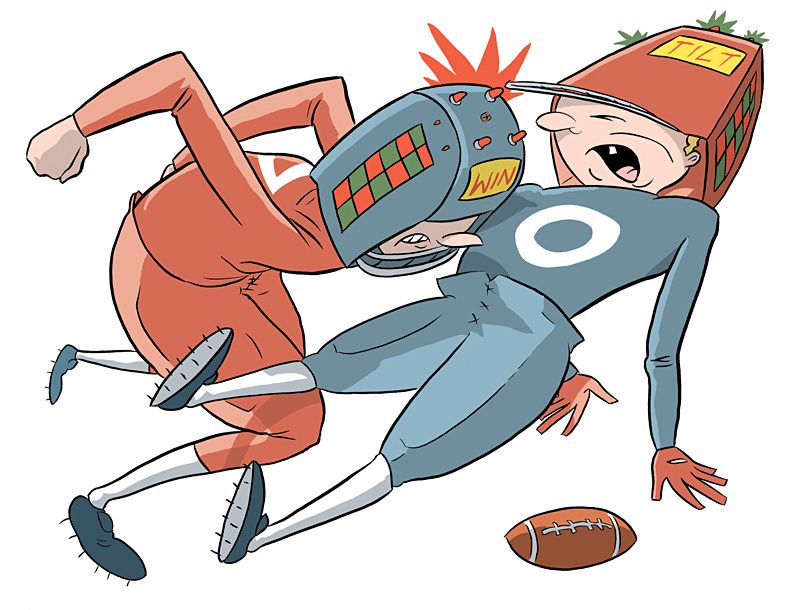JAZZ CULTURE, LIKE the country that spawned it, is marked by an ongoing tension over race that occasionally erupts into a full-on fracas. The most recent flap was over a JazzTimes column published this spring by Stanley Crouch in which he argued that white jazz critics regularly overpraise white musicians in order to “make themselves feel more comfortable about . . . evaluating an art form from which they feel substantially alienated.” A few weeks later, JazzTimes abruptly ousted Crouch from the masthead. Crouch cried censorship and industry pressure; his editors said he’d become a predictable crank.
Crouch has always championed the most retrograde of jazz viewpoints; he’s all about the Wyntonites, the young lions in suits, with their devotion to the canon and their reverence for tradition. Crouch sees jazz distinctly as an African-American art form, rooted in swing and the blues, and he’s got no patience for the view, prevalent in musically progressive towns like Seattle, that jazz can’t really be defined, that any kind of free-minded noise can claim descent from Coltrane and Armstrong. To Crouch, white artists like Dave Douglas and the Bad Plus earn their hype by coddling critics with European abstraction and rock motifs that make white listeners feel clued in.
Bigoted and maddening as he may be, not everything the old grouch says can be dismissed. Would the Bad Plus have won raves in Esquire and entrée to outlets like KEXP if they hadn’t made a special connection to white, indie-rock sensibilities? Would Diana Krall be a smash if cozy white couples (and critics) didn’t see their own cooing reflection in her? Still, I’m just as certain it cuts both ways. Surely Javon Jackson and some of the other dully derivative young-lion types wouldn’t command as much respect if they didn’t look like the guys you’re supposed to find onstage at a smoky jazz club. And let’s face itif violinist Regina Carter were white, she wouldn’t even be on the radar. Since African-American audiences long ago abandoned jazz in large numbers, it’s no surprise that white preferences and prejudices now dominate the music’s reception.
CHICAGO REED PLAYER Ken Vandermark embodies all these conflicts, but what I love about him is that he also fully transcends them. From a town known mostly for its black musical heritage, he arrives with an all-white quintet that is part thrash and part Euro, yet offers the open, soulful exhilaration, ingeniously updated, of Charles Mingus (a black music partisan who himself was of mixed race). In some ways, Vandermark is exactly the kind of critical darling that Crouch would kvetch about: suspiciously celebrated among the lily-white college music crowd, still records for the Chicago noise/punk label Atavistic. But Vandermark makes race moot, the way the best jazz musicians always have, by creating a sound powerful enough to shred the dividing lines.
On his newest disc, Airports for Light (Atavistic), the V5 quintet (trombone and two woodwinds, bass and drums) smartly balances freedom and precision in a way that harkens all the way back, as Mingus did, to the tightly disciplined, yet fairly bursting, group improvisations of early New Orleans combosthe horns sliding and abutting, completing and interrupting each other’s phrases, creating a many-headed, hooting beast. Having held down a weekly gig at Chicago’s Empty Bottle since 1996, the V5 marry an astonishing rigor to the chaotic energy of free jazz: blistering honks, squawks, squibs, and slurs are sculpted to precision, like a Jackson Pollock splatter painting instantly created by five men with tiny brushes. And that’s only one element of the V5 sound, which blazes through Stax parties, very very circuses, and passages of acute beauty. The nine-minute “Long Term Fool,” dedicated to Otis Redding (Vandermark dedicates all his tunes to an important musical influence), has a tender, steady power that builds to an utterly lovely close: This is a band that knows how to play slow as well as fevered.
V5 COULD BE called the flagship of Vandermark’s numerous projects: Like his contemporary Dave Douglas, he takes part in dozens of highly disparate bands, throws out a remarkably prodigious output, and has the somewhat academic gravitas that arts grant-makers love. Indeed Vandermark pulled down the big kahuna of grants, the MacArthur “genius” award, a few years ago (an honor also accorded, by the way, to Stanley Crouch). But Vandermark comes off as less conceptual and pretentious than Douglas; even as he imposes a deep rigor on his band mates, he seems to foster that churchlike abandon so powerful in Mingus’ unit. His music may not be as original or reach as far as that of Douglas or other current composers, but it has a polish and directness that stems partly from humility. It’s hard to gainsay the modesty of a bandleader who hires a second guy in the group on his own instrument (the excellent saxophonist Dave Rempis) and gives him most of the solos.
Though perennially described as “talent deserving wider recognition” (in DownBeat parlance), it seems to me that Vandermark has found a career sweet spot. He’s got a certain amount of Chicago punk notice, having played in rock bands when he first came to the city in the late ’80s; he’s also collaborated with some of the most creative European improvisers; and he’s been instrumental in helping revive a Chicago scene in which African-American elders like saxophonist Fred Anderson play a lead role. He’s touched all bases, and now he and his excellent group of white guys will be giving some fine instruction on the current color-blind art of jazz. And no, Stanley, there won’t be any dedications to you.








